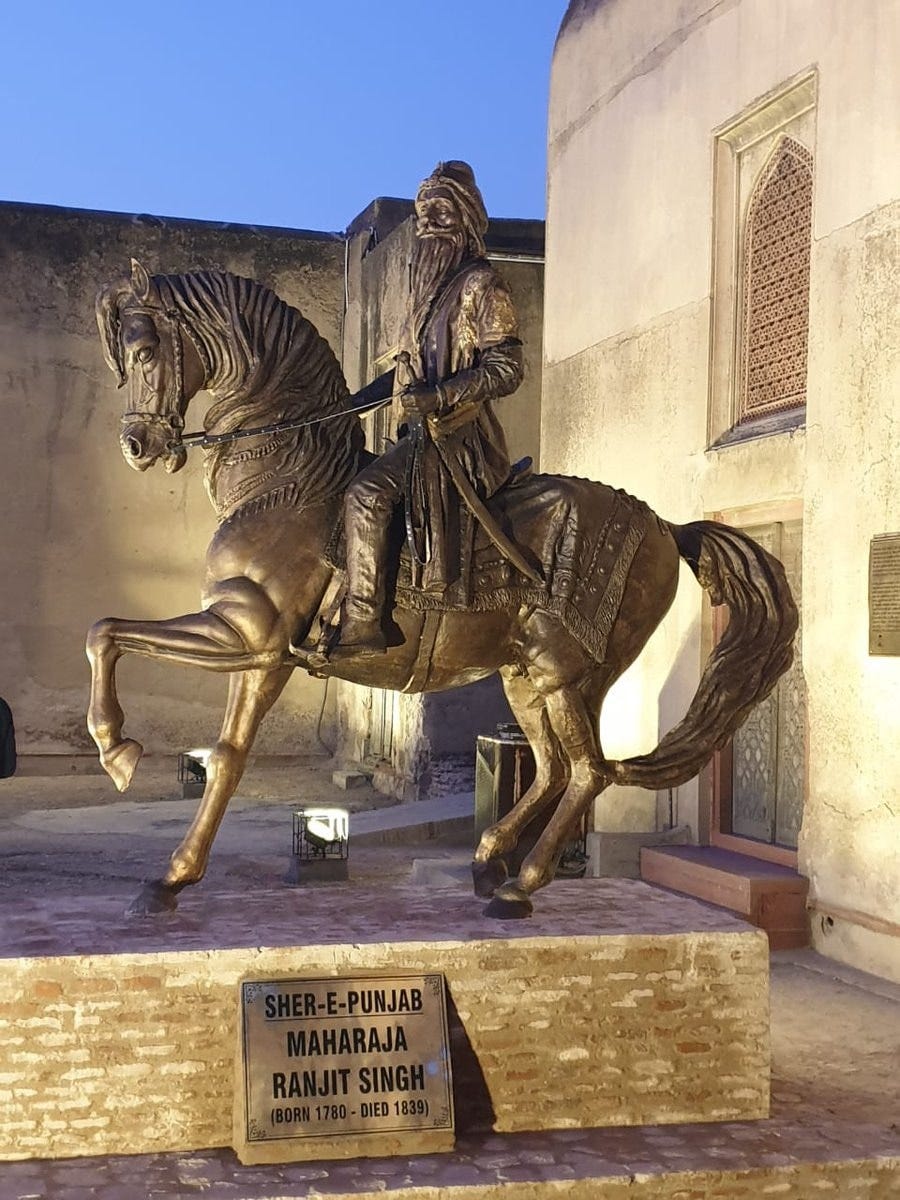The Story of Maharaja Ranjit Singh’s Statue in Pakistan: Unifying Across Borders
Story of the Statue
The tale of Maharaja Ranjit Singh's statue is one of resilience, symbolism, and the enduring spirit of unity across a divided subcontinent. This narrative delves into the journey of the statue from its unveiling in Lahore to its relocation in Kartarpur, reflecting the complex interplay of history, religion, and regional politics.
A Tribute to the Sikh Empire Founder
In June 2019, a life-size bronze statue of Maharaja Ranjit Singh, the formidable 19th-century founder of the Sikh Empire, was unveiled at the historic Lahore Fort, in Pakistan Punjab. This 9-foot tall equestrian statue, portraying the regal Sikh Emperor riding his favourite horse and wielding a sword, was sponsored by UK-based Sikh historian Bobby Singh Bansal and sculpted under the supervision of the Fakir Khana Museum in Lahore. The unveiling marked the 180th death anniversary of Maharaja Ranjit Singh, celebrating his legacy and contributions to the region.
Vandalism and Restoration
However, the statue's presence in Lahore Fort was met with hostility by certain extremist groups in Pakistan. These groups, citing historical grievances, vandalized the statue multiple times. It was first attacked just months after its unveiling in 2019, followed by further vandalism in 2020, and a severe attack in 2021 when a member of the radical Tehreek-e-Labbaik Pakistan Party broke the statue's arm and dismantled Ranjit Singh's bust from the horse. These acts of vandalism highlighted the persistent tensions and divergent historical narratives within the region.
The Move to Kartarpur
After suffering nearly 80% damage, the Fakir Khana Museum undertook the restoration of the statue. In a significant move, the Pakistan Government decided in June 2023 to relocate the restored statue to Gurdwara Darbar Sahib Kartarpur, a revered Sikh shrine in Narowal district of the Punjab province of Pakistan. This gurdwara is historically significant as it marks the place where Sri Guru Nanak Dev ji, the founder of Sikhism, settled and established the Sikh community after his extensive travels.
A New Home for the Statue
The unveiling ceremony of the restored statue at Kartarpur Sahib on June 27, 2023, was a momentous occasion, attended by 455 Indian Sikhs who had travelled to Pakistan to commemorate Maharaja Ranjit Singh's death anniversary. The statue now graces a park named after Ranjit Singh within the gurdwara complex, symbolising a renewed commitment to protecting and honouring Sikh heritage.
Mixed Reactions and Symbolic Implications
The relocation of the statue to Kartarpur Sahib has been met with mixed reactions. While many Sikhs have welcomed this move, seeing it as a gesture of respect and reverence, some activists argue that it represents a concession by the Pakistan Government, to radical elements. They believe that the statue’s relocation from Lahore Fort, where Ranjit Singh once ruled, to a gurdwara, undermines efforts to present an unbiased and secular interpretation of his reign. These activists call for the statue to be returned to its original location in Lahore Fort, advocating for a more inclusive representation of history.
A Symbol of Unity and Resilience
Despite the differing opinions, the statue’s presence at Gurdwara Darbar Sahib Kartarpur stands as a testament to the enduring legacy of Maharaja Ranjit Singh. The Pakistan Government has assured its protection and security at this new location, which is frequented by thousands of Sikh pilgrims from India every year via the Kartarpur Corridor. The statue serves not only as a tribute to the legendary Sikh ruler but also as a symbol of the potential for unity and reconciliation in a historically divided subcontinent.
Summing Up
The journey of Maharaja Ranjit Singh's statue from Lahore to Kartarpur encapsulates the complexities of historical memory, religious significance, and regional politics. It underscores the importance of preserving heritage while navigating the delicate balance of diverse perspectives. As the statue stands tall at Kartarpur Sahib, it invites reflection on the shared history and interconnectedness of the subcontinent, offering a beacon of hope for greater unity and understanding.
If you believe this article would interest someone you know, please feel free to share it anonymously (for us), using any platform that you prefer.





